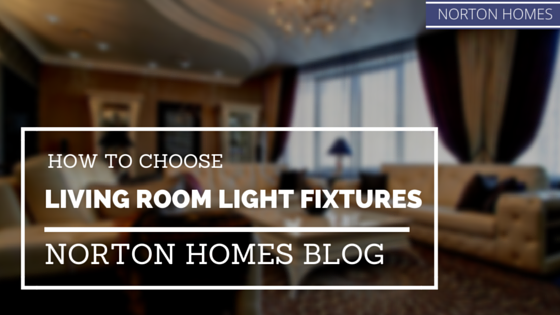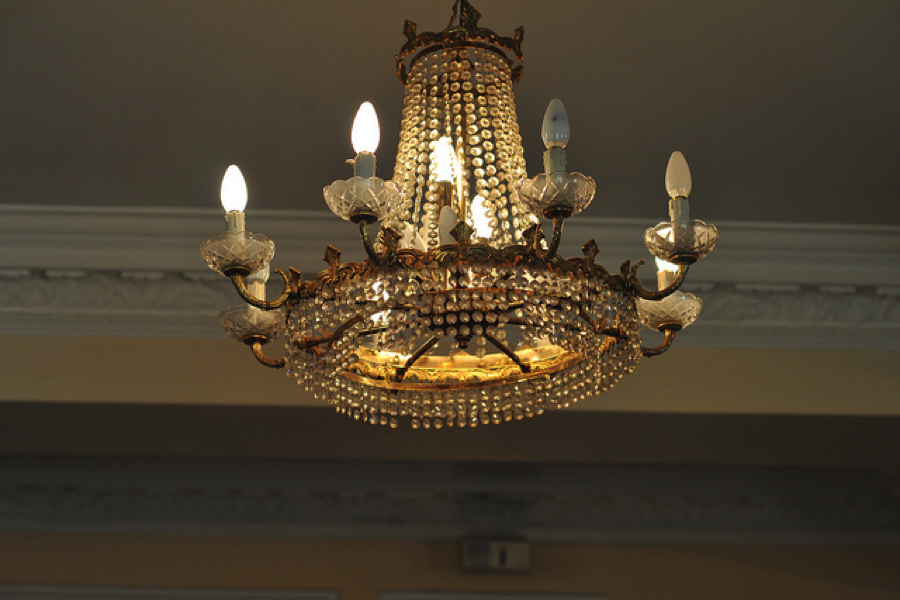How to Choose Living Room Light Fixtures

One of the most important parts of a living room is something you might not even notice. Lighting is what sets the tone for everything it illuminates. It’s an element that can alter moods and create an intimate atmosphere for the home. Most people spend plenty of time in their living rooms, so it’s important to create an environment that’s easy on the eyes. Effective lighting makes people feel comfortable for any living room activity. It can be tricky to choose the right lighting for living rooms, so we’re here to help.
You will get the best results from a variety of light sources that compliment each other. Dimmers allow you to set brightness levels, which is useful when you need to switch from reading to watching television. Consider purchasing energy-efficient bulbs, such as LEDs, to save big on your energy bill. This type of lighting uses 90% less energy and has a longer lifespan than incandescent options. Whatever technology you go with, be sure you account for the four types of living room lighting:
Ambient

This is the light that softly and evenly fills undefined parts of a living room. Great ambient lighting makes a room feel warm and welcoming. Homeowners typically choose chandeliers and ceiling lights to accomplish this. Wall mounts or portable fixtures can have the same effect. If you’re looking to eliminate glare in a room, ambient lighting is the answer. The best ambient lighting blends right into a room. Keep scale and design in mind when choosing lights to install. An elegant room will look great with an ornate light source while minimalist rooms benefit from more subdued lighting.
Task
Living up to its name, task lighting is meant to help you get things done. Brighter than other types of lighting, task is the perfect companion when you need to read or write. Floor lamps with adjustable swinging arms or portable table lamps make great task lights. Since these light sources aren’t meant to fill the entire room, you should only turn them on for certain activities. Be mindful of positioning when setting up a room with task lights. Placing these lamps away from seating makes them useless.
Accent
You can direct attention to art, textured walls or architectural features with accent lighting. It is meant to highlight something else in the room and add a sense of drama to the environment. Recessed lighting directed towards a cozy fireplace is an excellent way to create visual interest. If you have a sculpture or trophy you want to emphasize, under-cabinet lighting makes it pop. Accent lighting usually has adjustable brightness levels, which come in handy for day-to-night transitions.
Decorative

When you add decorative lighting to a living room, it draws attention to itself. This is a kind of lighting you can infuse with your own personal style. Any of the other three types of lighting can be considered decorative, so long as they add interest to the room. Decorative lighting creates a radiant focal point and may become a living room centerpiece. Impressive chandeliers, hanging pendants and even floor lamps can make a statement and provide a finishing touch for a room.
The living room is just one area you can bring to life with lighting. Every room has a specific purpose, and so should its lighting. When you customize a home with Norton, we can help you visualize what a room will look like with different types of lights. Before you even move in, you will already know which lights will bring a room together. Nobody wants to be left in the dark when customizing a building. Create an environment you can’t wait to come home to.